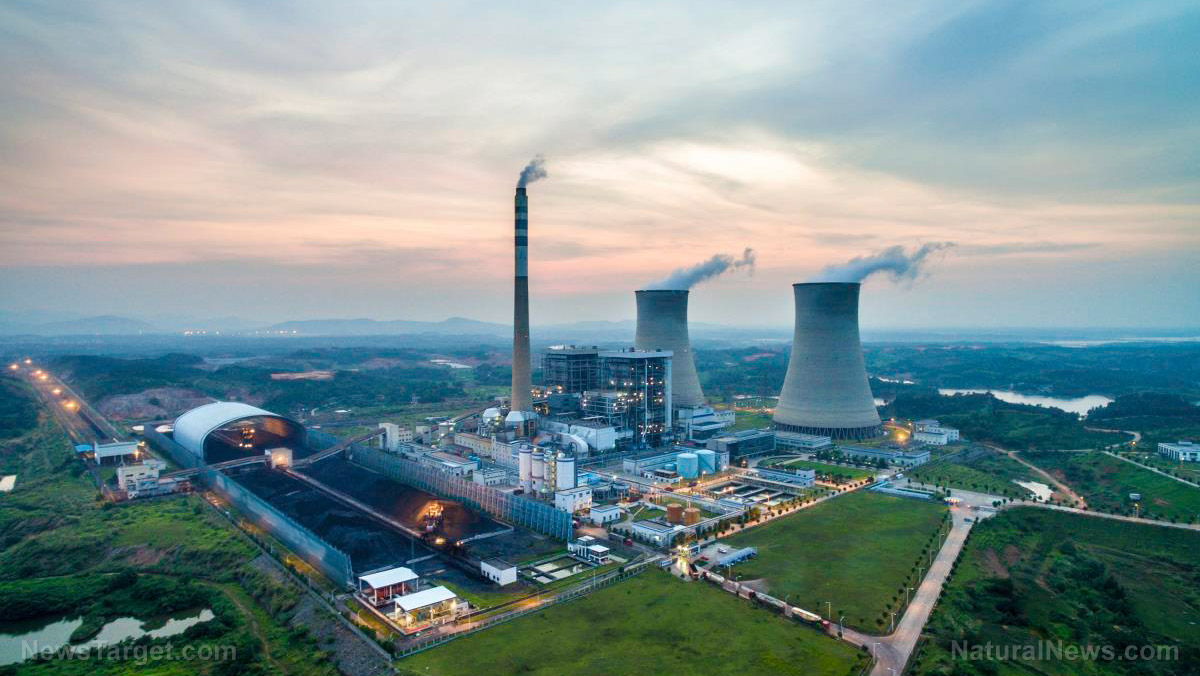U.S. shatters energy production records amid deregulation push
06/11/2025 / By Willow Tohi

- U.S. energy production reached a record 103 quadrillion Btu in 2024, driven by fossil fuels and renewables.
- Gas accounted for 38% of output, maintaining its status as the top energy source since 2011.
- Wind and solar output surged, but together with biofuels, renewables contributed just 15% of total energy.
- Coal output hit a 60-year low in 2024, dropping to 10% of U.S. energy production.
- Trump orders prioritize fossil fuels, sparking lawsuits over environmental concerns, despite booming energy output.
For the first time in modern history, the United States produced over 100 quadrillion British thermal units (Btu) of energy in 2024, eclipsing all previous records and underscoring America’s energy independence. The Energy Information Administration (EIA) revealed robust growth in natural gas, crude oil and renewables, driven by technological advancements and policies favoring domestic energy expansion. Despite coal’s continued decline, President Donald Trump’s administration doubled down on fossil fuels, rolling back environmental regulations and vowing to “unleash American energy” amid claims of a national crisis—claims at odds with the EIA’s bullish data. This landmark year pits regulators against market forces in a debate over energy dominance, environmental stewardship and the path forward for U.S. energy policy.
Natural gas and oil lead as fossil fuels surge
Natural gas solidified its role as the nation’s energy cornerstone, contributing 38% of total production—a level unmatched since overtaking coal in 2011. Output hovered near 38 trillion cubic feet, bolstered by shale drilling and infrastructure expansion. Crude oil also reached a record 13.2 million barrels per day (bpd), with Texas’ Permian Basin accounting for most gains. This milestone cements the U.S. as the world’s top oil producer, reversing a historic trend of towering imports. Combined, fossil fuels (gas, oil, coal and natural gas liquids) supplied 84% of 2024’s energy, outpacing renewables and nuclear.
Renewables prosper, but face regulatory crosswinds
Renewables marked a record year: solar output rose 25%, wind expanded 8% and biofuels hit 1.4 million bpd. Together, renewables accounted for 15% of domestic energy, though wind and solar alone contributed just 2.5%. “This shows progress but underscores the gap between government mandates and market realities,” said energy consultant John Carter, noting solar’s still-small footprint. The Trump administration, however, has dampened renewable growth, halting offshore wind projects and redirecting subsidies toward fossil fuels. Proponents argue the market—not subsidies—should guide energy choices, while critics warn of stifling innovation.
Policy and politics: Deregulation vs. environmental concerns
On his first day in office, Trump signed an executive order declaring a national “energy emergency” and another to reverse climate rules, including re-exiting the Paris Agreement. Despite record production, Trump framed fossil fuels as vital to economic security, vowing to expedite pipeline permits and revive coal production. Environmental groups and 15 states have sued to block these measures, claiming they endanger public health and climate goals. Meanwhile, coal output plummeted to a 60-year low (512 million short tons), and the U.S. exported 1.5 quadrillion Btu more than it imported in early 2025, signaling sustained energy surplus.
The ripple effect: Legal battles and market dynamics
Legal fights have erupted nationwide. A coalition of 15 Western states sued to halt the wind permitting pause, calling it “a myopic focus on fossil fuels.” Youth plaintiffs in a Montana case argued Trump’s orders would exacerbate climate anxiety, while Texas-based lawsuits argued they stifle rural energy jobs. Economically, the surge benefits oil-dependent states, with Permian Basin wages hitting record highs. Conversely, coal communities grapple with closures. “This administration’s actions ignore reality,” said Sen. Sheldon Whitehouse (D-RI), “but markets keep proving energy abundance isn’t at odds with progress.”
Energy abundance amid ideological crossroads
The 2024 energy boom signifies a tangible success—economic might partnered with geopolitical clout as the U.S. exports energy globally. Yet, the record fuels a deeper debate: Can a free market, unshackled by burdensome regulations, sustainably meet energy demands? As renewables grow, policies will determine whether states and courts allow the natural rise of market-driven innovations or enforce limits. With oil approaching 13.5 million bpd by 2025, this may prove the first chapter in reshaping America’s energy future, which is clearly stronger will a wide variety of energy sources.
Sources for this article include:
Submit a correction >>
Tagged Under:
big government, Climate, energy boom, energy production, energy supply, fossil fuel, glitch, green tyranny, new energy report, oil, supply chain, Trump
This article may contain statements that reflect the opinion of the author




















